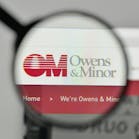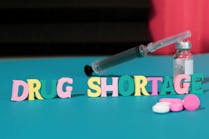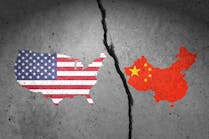State of Healthcare Procurement — Part 3
Optimizing Sourcing and Logistics: 6 Proven Strategies
Editor’s note: This article is the final part in a three-part series exploring the challenges and opportunities facing healthcare procurement leaders as outlined in the 2024 Healthcare Procurement and AI playbook from Healthcare Purchasing News (HPN) and Staples Business Advantage (SBA). (See part one here and part two here.) Respondents’ comments have been lightly edited for length and clarity.
For today’s healthcare procurement leader, a focus on the future is crucial to building an operation that stands the test of time.
Sourcing and logistics — the cornerstones of a thriving supply chain — are the right place to start, according to more than 170 leaders surveyed for HPN and SBA’s 2024 Healthcare Procurement and AI report. “We need to enhance our ability for technological innovation to cope with the changes brought about by various developments,” one respondent notes.
Headwinds range from a global pandemic and war to widespread cyber threats and supply chain disruption. Facing such challenges head-on requires grit, resilience, and an expansive view of innovation.
2 key areas for innovation
Within the realm of sourcing and logistics, leaders identify two areas that are especially ripe for innovation:
- Streamlining supplier management: For 55% of respondents, improving supplier management is a “high” or “critical” priority. Potential obstacles include selecting reliable partners and maintaining smooth communication even in the face of setbacks. “The biggest challenge is finding qualified suppliers who can quickly and stably handle after-sales issues,” one respondent explains.
- Optimizing ordering: 82% of respondents call order optimization a top priority. The practice remains difficult, however, due to factors like “out-of-stock items, delivery delays, and increased pricing,” as well as “disorganized purchasing, limited visibility, and the risk of fraud and human error,” respondents note. These issues can force procurement teams to scramble for alternatives while waiting for back-ordered products.
6 strategies for optimization
1. Automate routine tasks: “There are too many repetitive tasks, consuming time and elongating the procurement cycle,” one respondent explains.
According to survey respondents, procurement leaders can streamline tasks such as:
- Tracking and recording routine and initial orders
- Comparing supplier prices
- Organizing and scheduling procurements
2. Get strategic with advanced tech: 74% of the senior executives and directors surveyed have integrated AI into some or all areas of procurement — and 92% of adopters are happy with the results.
AI helps these users by:
- Increasing procurement efficiency (according to 64% of adopters)
- Reducing repetitive tasks (58%)
- Optimizing ordering (57%)
Respondents suggest three best practices for success:
- Starting with a clear goal in mind
- Being open to experimenting
- Keeping humans “in the loop” and at the helm
3. Better forecast demand: “Accurately predicting the required products and timely procurement are quite challenging,” one leader explains. Predictive procurement is an emergent solution that uses data analytics and AI to forecast demand and proactively address challenges. With 77% of respondents citing demand forecasting as a top priority, this technology could provide much-needed relief in navigating procurement barriers.
4. Collaborate with partners: When implementing innovative solutions, such as those involving AI, leaders should seek input from peers, leaders, and experts who’ve been there.
“A lot of us are going to have to partner with third parties to bring AI-enabled tools into our organizations,” explains Jack Koczela, director, analytics and transformation, supply chain, at Froedtert Health, a Wisconsin-based system with 10 hospitals and more than 45 health centers and clinics. “Large IDNs and healthcare organizations may be able to hire AI professionals. But smaller organizations will probably expect [ERP vendors and other partners] to fold AI into the solutions they offer.”
5. Motivate your team: At a time when myriad macro forces are fueling burnout and turnover, supply chain leaders can motivate their teams with competitive compensation packages, along with evidence of how employees’ input is used to shape solutions that make their jobs easier. “Establish incentive mechanisms to encourage innovative ideas,” one respondent advises.
6. Lean on time-tested methods: Not all innovation needs to be high-tech. Many respondents point to established frameworks and guidelines that can improve team performance and satisfaction. Lean principles, for example, “focus on maximizing customer value while minimizing waste,” one respondent notes. “Organizations can streamline processes, reduce unnecessary steps, and enhance overall efficiency.”
Procurement leaders can ensure long-term success by reinforcing foundational practices in sourcing and logistics while embracing time-tested strategies, emerging solutions, and a continuous openness to innovation.
Staples Business Advantage is a trusted partner for procurement leaders at thousands of healthcare organizations nationwide. Partnerships with top GPOs enable clients to achieve significant cost savings while streamlining purchasing across multiple product categories, including EVS, furniture, breakroom, office supplies, and more. Learn more.
Sponsored by:






